The 30 Richest Places to Live in Iowa: Comprehensive Wealth Rankings
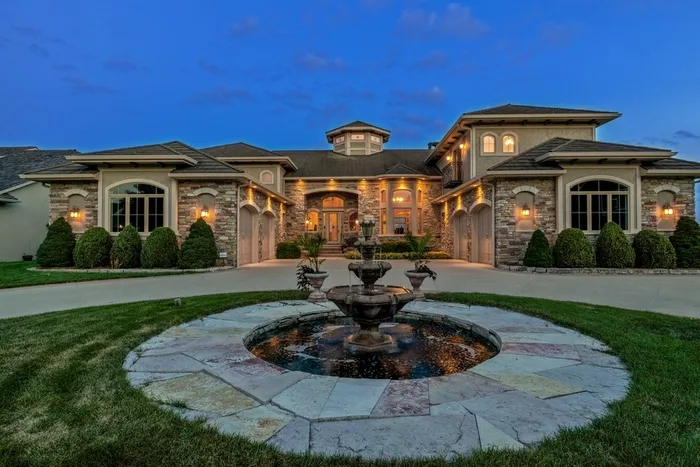
Iowa’s reputation for agricultural abundance and modest living costs often overshadows the presence of numerous affluent communities throughout the state.
From suburban enclaves near Des Moines to university towns and regional economic centers, the Hawkeye State contains diverse areas where residents enjoy above-average incomes and enhanced quality of life.
This comprehensive analysis examines thirty of Iowa’s wealthiest communities, ranging from well-established suburbs like Clive and Waukee to smaller towns that have cultivated economic prosperity.
The communities span various regions of the state, including metropolitan areas around Des Moines, Cedar Rapids, and Iowa City, as well as independent cities that have developed strong local economies.
Each location offers distinct characteristics that contribute to their residents’ financial well-being and overall prosperity.
Here are the 30 richest places to live in Iowa:
1. Clive
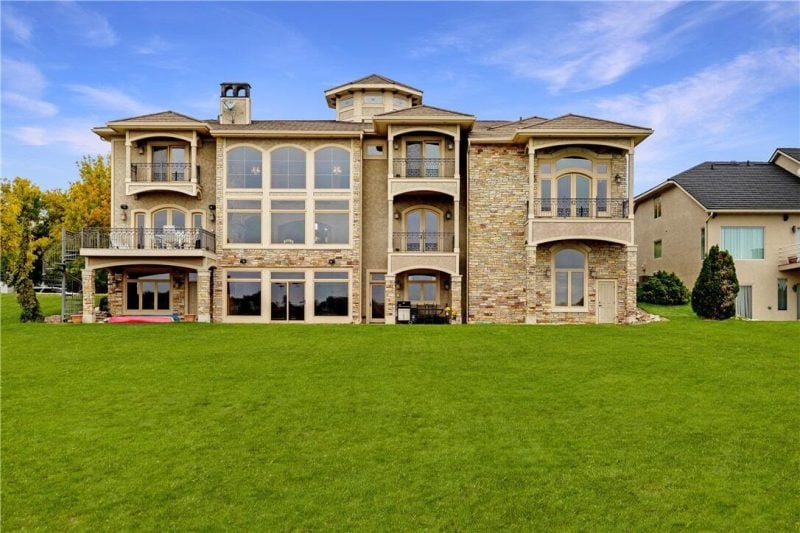
Clive consistently ranks as one of Iowa’s wealthiest cities. The community reports a median household income of approximately $107,268, placing it at the top of affluent Iowa municipalities.
Located in the Des Moines metropolitan area, Clive houses around 18,000 residents. Many residents work in professional occupations, contributing to the city’s strong economic profile.
The city maintains well-developed parks and recreational trails throughout its boundaries. These amenities enhance the quality of life for residents and support property values.
Clive’s proximity to Des Moines provides access to urban employment opportunities while maintaining a suburban residential environment. The combination of high incomes and quality infrastructure makes it attractive to affluent families.
The city’s economic stability stems from its educated workforce and strategic location within Iowa’s primary metropolitan region.
2. Waukee
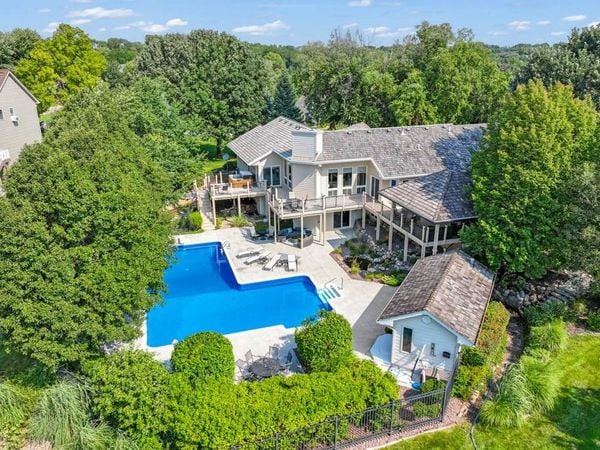
Waukee stands as one of Iowa’s wealthiest communities, consistently ranking among the top affluent cities in the state. The city is located in the Des Moines metropolitan area, benefiting from its proximity to the state capital.
This Des Moines suburb has experienced significant growth in recent years. The community attracts residents who work in professional fields throughout the metro area.
Waukee offers excellent amenities that appeal to affluent families. The city maintains high-quality parks, recreational facilities, and well-developed neighborhoods.
The local school district contributes to the area’s desirability among wealthy residents. Educational excellence remains a key factor in attracting families to the community.
Housing values in Waukee reflect the area’s economic prosperity. The city’s strategic location and quality of life continue to drive demand among high-income earners seeking suburban living near Des Moines.
3. Johnston

Johnston consistently ranks among Iowa’s wealthiest communities, situated in the desirable Des Moines metropolitan area. The city attracts affluent families and professionals seeking upscale suburban living.
This Polk County community features well-established neighborhoods with higher-than-average home values. Many residents work in professional fields, contributing to the area’s strong economic profile.
Johnston’s proximity to Des Moines provides easy access to employment opportunities while maintaining a quieter residential atmosphere. The city offers quality amenities and well-maintained public spaces.
The community has experienced steady growth in both population and property values over recent years. Local schools and family-friendly environment make Johnston particularly attractive to households with children.
Real estate in Johnston commands premium prices compared to many Iowa communities. The combination of location, amenities, and economic stability contributes to its status as one of the state’s more prosperous places to live.
4. Rodman
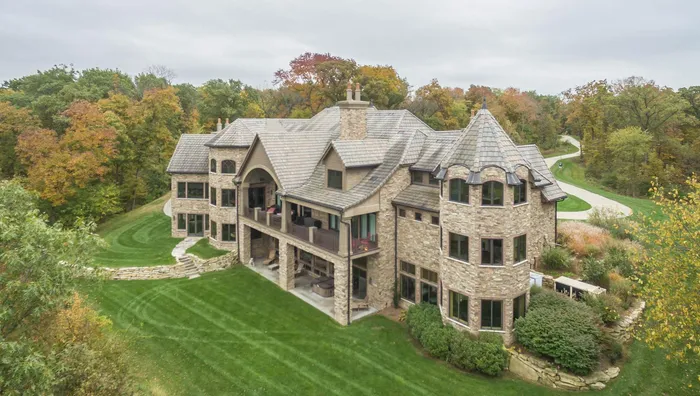
Rodman leads Iowa’s wealthiest communities with an impressive average income of $337,712 according to 2025 Census data. This small community has established itself as the state’s highest-earning location.
The town’s extraordinary income levels set it apart from other affluent Iowa cities. Rodman’s residents enjoy significantly higher earnings compared to most communities across the state.
Despite its small size, Rodman demonstrates that wealth concentration can occur in Iowa’s smaller municipalities. The community’s economic profile reflects a unique demographic composition that supports these elevated income levels.
Rodman’s position at the top of Iowa’s income rankings showcases the diversity of prosperous communities throughout the state. The town represents an example of how smaller Iowa communities can achieve remarkable economic success.
5. West Des Moines
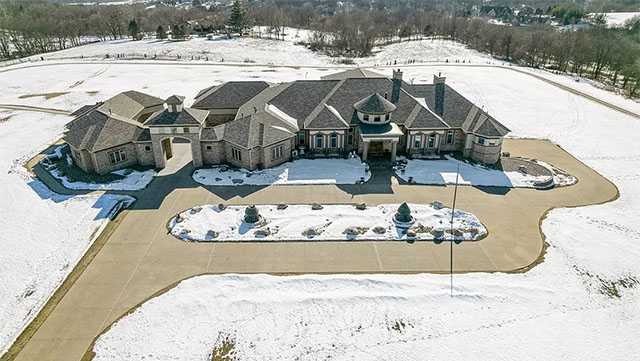
West Des Moines stands as one of Iowa’s most affluent communities. The city consistently ranks among the state’s wealthiest locations due to its strong economy and high property values.
The median household income in West Des Moines exceeds the state average significantly. Residents enjoy access to excellent schools and well-maintained neighborhoods that attract families and professionals.
Real estate prices reflect the city’s desirability. Some of Iowa’s most expensive homes are located here, including luxury properties with substantial acreage and premium amenities.
The city benefits from its proximity to downtown Des Moines while maintaining a suburban character. Major employers and corporate headquarters contribute to the area’s economic stability.
West Des Moines offers extensive recreational facilities and parks. The combination of economic opportunity and quality of life makes it attractive to high-income residents seeking upscale living options in central Iowa.
6. Linn
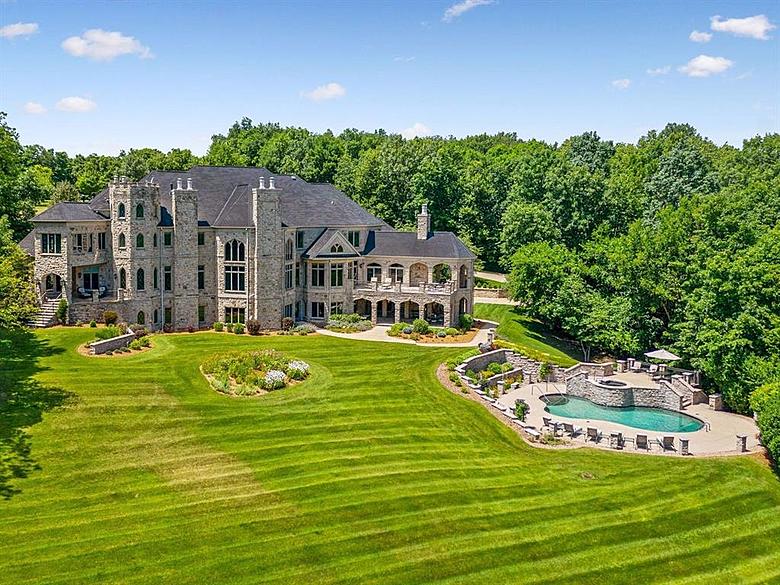
Linn County represents one of Iowa’s more prosperous regions, anchored by the city of Cedar Rapids. The county benefits from a diverse economic base that includes manufacturing, technology, and healthcare sectors.
Cedar Rapids serves as the economic engine for Linn County. Major employers like Rockwell Collins and Cargill provide high-paying jobs that contribute to the area’s wealth.
The median household income in Linn County exceeds the state average. Residents enjoy access to quality schools, cultural amenities, and recreational opportunities.
Housing values in desirable neighborhoods within Cedar Rapids and surrounding communities reflect the area’s economic strength. The county offers a mix of urban conveniences and suburban comfort.
Linn County’s strategic location along major transportation corridors supports continued economic growth. This accessibility attracts businesses and residents seeking prosperity in eastern Iowa.
7. Urbandale

Urbandale consistently ranks as one of Iowa’s wealthiest cities with a median household income of approximately $95,961 annually. This places it second among the richest communities in the state.
The city sits near Des Moines, providing residents with easy access to metropolitan amenities. Many Urbandale residents work in professional sectors throughout the greater Des Moines area.
Urbandale offers exceptional public schools that attract families seeking quality education. The community features extensive parks and bike trails that enhance the living experience.
The city regularly appears on national “Best Places to Live” lists due to its combination of amenities and affordability. Money magazine has recognized Urbandale in its Top 50 Best Places to Live rankings.
Housing remains relatively affordable compared to other wealthy Iowa communities. This affordability factor contributes to Urbandale’s appeal among young professionals and families.
8. Ankeny
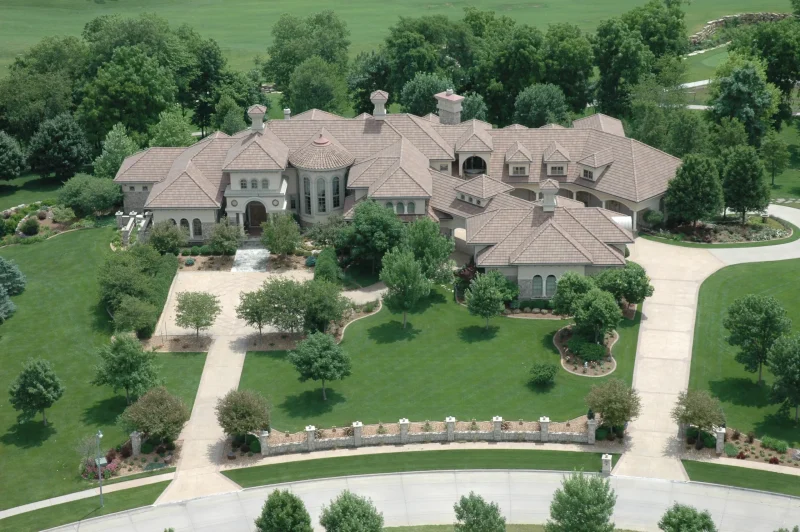
Ankeny stands out as one of Iowa’s most prosperous communities with a median household income of $97,055. This places the city well above national averages, ranking in the 90th percentile for household incomes across the United States.
The city has gained significant national recognition beyond its wealth. U.S. News & World Report ranked Ankeny 18th among the best places to live in America for 2025-2026.
Education levels contribute significantly to Ankeny’s economic success. Approximately 50% of adults hold bachelor’s degrees or higher, compared to just 31% nationwide.
Ankeny represents one of Iowa’s fastest-growing cities. The community consistently attracts residents seeking both economic opportunity and quality of life in a suburban setting near Des Moines.
9. Cedar Rapids
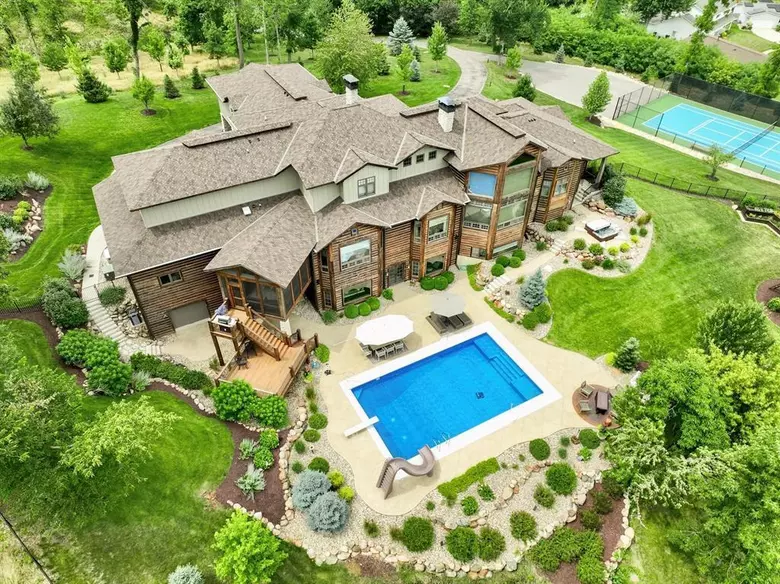
Cedar Rapids stands as Iowa’s second-largest city with approximately 136,000 residents. The city serves as a significant economic hub in eastern Iowa.
Home prices in Cedar Rapids align closely with the state average of $182,666. This affordability makes it attractive to both families and investors seeking reasonable real estate costs.
The local economy benefits from diverse industries that provide stable employment opportunities. Cedar Rapids offers urban amenities while maintaining lower living costs compared to many metropolitan areas.
The city features established neighborhoods with varying home values. Market data shows certain areas command higher prices due to desirability and quality of life factors.
Cedar Rapids provides residents with healthcare facilities, educational institutions, and cultural attractions. The combination of economic stability and reasonable housing costs contributes to its position among Iowa’s more prosperous communities.
10. Coralville
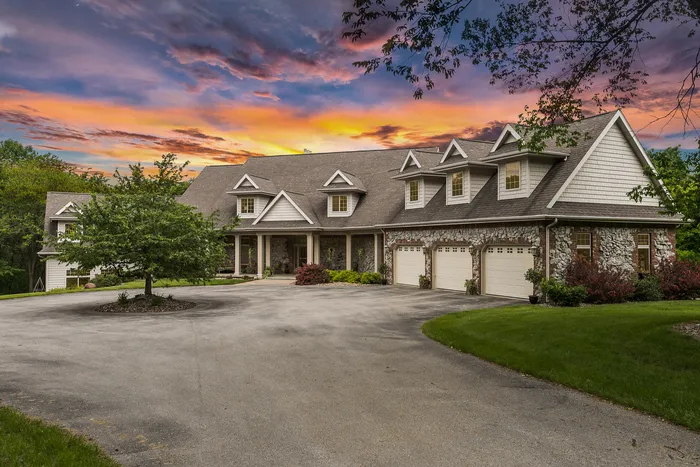
Coralville ranks as the third most expensive town in Iowa according to recent housing data. The city has a population of approximately 22,000 residents and sits in Johnson County.
Located in the Greater Iowa City Metropolitan Area, Coralville benefits from its proximity to the University of Iowa. This connection contributes to the area’s economic stability and growth.
The median household income in Coralville is $68,230, which exceeds the national median of $67,500. The home price to income ratio stands at 3.6x, making it the fourth most expensive in the state for housing affordability.
Residents pay higher costs for housing, groceries, healthcare, and other essentials compared to many other Iowa cities. The median home value reaches $223,900.
Despite higher living costs, Coralville maintains a poverty rate of 11.5%, which is 18% lower than the national average.
11. Ames
Ames serves as home to Iowa State University, which significantly influences the city’s economic landscape. The university brings stable employment opportunities and attracts educated professionals to the area.
The city’s median household income reflects its educated population base. Many residents work in academia, research, and technology sectors connected to the university.
Ames offers a blend of college town amenities with family-friendly neighborhoods. The presence of the university creates a demand for quality housing and services.
The local economy benefits from research facilities and spin-off companies. Iowa State’s programs in engineering, agriculture, and veterinary medicine contribute to higher-paying job opportunities.
Housing costs remain reasonable compared to coastal areas while still reflecting the city’s economic stability. The combination of educational institutions and professional opportunities makes Ames an attractive location for affluent residents.
12. Iowa City
Iowa City serves as home to the University of Iowa and maintains a diverse economy beyond its academic roots. The city’s median household income reaches approximately $52,000, with significant variation across different neighborhoods.
Downtown Iowa City features upscale residential areas where professionals and faculty members reside. The Coralville Heights and North Liberty suburbs attract higher-earning residents seeking modern amenities.
The presence of the university creates a stable job market in healthcare, education, and research sectors. University of Iowa Hospitals and Clinics employs thousands of medical professionals with competitive salaries.
Housing costs remain moderate compared to metropolitan areas, allowing residents to achieve comfortable living standards. The city’s cultural offerings and educational opportunities contribute to its appeal among affluent families and young professionals.
13. Dubuque
Dubuque sits along the Mississippi River in northeast Iowa. The city offers residents scenic river views and historic charm that attract both families and retirees.
The community provides a calm-paced lifestyle compared to larger metropolitan areas. This riverside location creates an appealing environment for those seeking quality of life.
Dubuque has established itself as one of Iowa’s more prosperous cities. The area features diverse income levels across different neighborhoods, with several high-earning districts.
The city’s economic stability comes from its mix of industries and river commerce. Healthcare, education, and manufacturing sectors provide employment opportunities for residents.
Housing costs remain reasonable compared to coastal markets. The combination of steady incomes and manageable living expenses contributes to Dubuque’s wealth accumulation potential.
14. Pleasant Hill
Pleasant Hill stands out as one of Iowa’s more affluent communities with a median household income of $87,014. This places the city well above national averages, ranking in the 84th percentile for household incomes across the United States.
The city’s prosperity correlates with its educated population. Approximately 34% of Pleasant Hill adults hold bachelor’s degrees or higher, exceeding the national average of 31%.
Pleasant Hill’s location near Des Moines provides residents access to metropolitan employment opportunities while maintaining a suburban atmosphere. The community offers a balance of economic stability and quality of life that attracts middle to upper-middle class families.
Housing values in Pleasant Hill reflect the area’s desirability and economic strength. The city consistently ranks among Iowa’s better places to live, with strong educational resources and community amenities supporting its residential appeal.
15. Grimes
Grimes stands as one of Iowa’s most desirable communities for affluent residents. The city attracts families seeking high-quality neighborhoods with excellent property values.
Housing markets in Grimes show significant variation across different areas. The most sought-after neighborhoods command premium prices that reflect their desirability.
Location plays a key role in Grimes’ appeal to wealthy residents. The city’s proximity to Des Moines provides access to employment opportunities while maintaining a suburban atmosphere.
Property values serve as indicators of neighborhood quality throughout Grimes. Higher-value areas typically offer better amenities and community features that attract affluent buyers.
The city has developed a reputation for safe, well-maintained residential areas. These characteristics make Grimes particularly attractive to families with substantial household incomes seeking quality living environments.
16. Clinton
Clinton sits along the Mississippi River in eastern Iowa, serving as the county seat of Clinton County. The city has a population of approximately 24,000 residents.
The median household income in Clinton reaches around $45,000 annually. This places it among Iowa’s more comfortable communities for middle-class families.
Clinton’s economy traditionally centered on manufacturing and river commerce. The city maintains several industrial facilities that provide stable employment opportunities for local residents.
Housing costs in Clinton remain relatively affordable compared to larger Iowa cities. The median home value typically falls below the state average, making homeownership accessible.
The community offers parks, recreational facilities, and cultural amenities along the riverfront. Clinton’s location provides easy access to both Davenport and Cedar Rapids for additional employment and entertainment options.
17. Bettendorf
Bettendorf stands as one of Iowa’s most prosperous communities in the Quad Cities metropolitan area. The city attracts affluent residents with its strong economy and desirable location along the Mississippi River.
Home prices in Bettendorf significantly exceed Iowa’s state average of $182,666. This price premium reflects the city’s desirability and economic strength compared to other Iowa communities.
The city made the list of Iowa’s highest earning municipalities by average household income. Bettendorf’s economic foundation includes diverse industries and proximity to regional employment centers.
Residents benefit from quality amenities and well-established neighborhoods. The community offers attractive living conditions that justify its higher cost of living compared to much of Iowa.
Bettendorf’s location provides access to both urban amenities and recreational opportunities along the river.
18. Burlington
Burlington ranks lower among Iowa’s wealthiest communities with a median household income of $51,034. This places the city below the national median income level.
The city sits in the 26th percentile for household incomes nationwide. About 73% of other cities have higher median household incomes than Burlington.
Educational attainment in Burlington trails national averages. Only 23% of adults hold bachelor’s degrees or higher, compared to 31% across the United States.
Burlington’s location along the Mississippi River provides scenic views and recreational opportunities. The city serves as a regional hub for southeastern Iowa despite its modest income levels.
Housing costs remain affordable compared to Iowa’s wealthier communities. This makes Burlington accessible for families seeking lower living expenses while maintaining access to amenities and employment opportunities in the region.
19. Mason City
Mason City offers affordable living costs compared to many Iowa communities. The city’s home prices sit below the state average of $182,666, making it accessible for various income levels.
Located in north-central Iowa, Mason City serves as a regional hub for commerce and healthcare. The community maintains steady economic growth through diverse industries and local businesses.
Housing markets in Mason City remain stable with reasonable appreciation rates. The city attracts residents seeking affordable homeownership without sacrificing amenities or community resources.
Mason City’s neighborhoods offer varying price points and home styles. From historic districts to newer developments, buyers find options that match their budgets and preferences.
The city’s economic foundation includes manufacturing, healthcare, and retail sectors. These industries provide employment opportunities that support the local housing market and overall community prosperity.
20. Council Bluffs
Council Bluffs sits across the Missouri River from Omaha, Nebraska, offering residents affordable living with small-town charm. The city provides a cost-effective alternative to more expensive Iowa communities while maintaining access to metropolitan amenities.
Home prices in Council Bluffs align closely with Iowa’s state average of $182,666. This affordability makes the city attractive to families and professionals seeking homeownership without premium costs.
The Fairmont Park neighborhood features historic homes with tree-lined streets. Lincoln/Fairview offers diverse housing options near downtown amenities, while Twin City provides affordable homes with strong community connections.
Council Bluffs benefits from its proximity to Omaha’s job market and cultural offerings. Residents can access employment opportunities across the river while enjoying lower living costs in Iowa.
The city combines practical affordability with neighborhood diversity, making it a solid choice for those prioritizing value and community atmosphere.
21. Sioux City
Sioux City offers affordable living costs compared to many Iowa communities. The city’s home prices fall below the state average of $182,666, making it accessible for middle-income families.
Located in western Iowa near the Nebraska and South Dakota borders, Sioux City serves as a regional economic hub. The city’s diverse economy includes healthcare, manufacturing, and agriculture-related industries.
Real estate markets in Sioux City provide value for homebuyers seeking affordable options. The lower housing costs attract residents who want homeownership without premium prices found in wealthier Iowa cities.
Sioux City’s neighborhoods vary in character and price points. Some areas show strong market demand, indicating residents’ preferences for specific locations within the city.
The community maintains steady economic activity through its position as a regional center. This stability supports local employment opportunities across multiple sectors.
22. Decorah
Decorah sits in northeastern Iowa as a picturesque small town that offers exceptional value for residents. The community provides an attractive blend of natural beauty and cultural amenities that rival larger cities.
The town features scenic waterfalls and outdoor recreational opportunities throughout the surrounding landscape. These natural attractions contribute to Decorah’s appeal as a desirable place to establish residence.
Decorah hosts world-class breweries that enhance the local dining and entertainment scene. The town’s cultural offerings include various community events and activities that foster resident engagement.
Retirees find Decorah particularly appealing due to its affordable cost of living combined with quality amenities. The town allows residents to maximize their purchasing power while maintaining access to desirable lifestyle features.
The community maintains a strong local economy supported by both tourism and resident spending. Decorah represents a compelling option for those seeking small-town charm with sophisticated amenities.
23. Marshalltown
Marshalltown sits in Marshall County with an estimated population of 27,000 people. The city serves as a regional hub in central Iowa.
The community offers residents a mix of outdoor recreation and cultural attractions. The Cultural & Entertainment District provides various entertainment options for locals and visitors.
Housing costs in Marshalltown run approximately 26% lower than national averages. This affordability makes it accessible for families and young professionals.
The city maintains a reputation for safety and community-oriented living. Residents benefit from easy access to amenities and services throughout the area.
Marshalltown’s economy supports various industries and employment opportunities. The city’s location provides convenient access to larger metropolitan areas when needed.
24. Newton
Newton stands as a mid-sized Iowa community with solid economic foundations rooted in manufacturing and agriculture. The city maintains steady household incomes that place it among Iowa’s more prosperous areas.
Located in Jasper County, Newton benefits from its proximity to Des Moines while offering lower living costs than the metropolitan area. This positioning attracts residents seeking economic opportunity without urban expenses.
The local economy centers around manufacturing operations and agricultural businesses. These industries provide stable employment opportunities for residents across various skill levels.
Newton’s housing market offers reasonable property values compared to Iowa’s most expensive communities. Residents can access quality amenities while maintaining affordable lifestyles.
The community provides essential services including healthcare facilities, educational institutions, and recreational opportunities that support family life and economic stability.
25. Ottumwa
Ottumwa serves as the county seat of Wapello County in southeastern Iowa. The city has a population of approximately 25,000 residents.
The local economy centers around agriculture, manufacturing, and healthcare services. Major employers include Cargill, which operates a meat processing facility in the area.
Ottumwa’s median household income falls below the state average. The cost of living remains relatively affordable compared to larger Iowa cities.
The Des Moines River runs through Ottumwa, providing recreational opportunities. Beach Ottumwa offers swimming and camping facilities during summer months.
Downtown Ottumwa features historic buildings and local businesses. The Ottumwa Regional Health Center serves as a major healthcare provider for the region.
Housing costs in Ottumwa are generally lower than state averages. The city offers affordable options for families and retirees seeking small-town living in Iowa.
26. Fort Dodge
Fort Dodge offers affordable living with a cost of living score of 88.9 compared to the national average of 100. This makes it an attractive option for residents seeking financial stability.
The city ranks well in multiple quality-of-life categories. Education levels, commute times, and overall livability scores contribute to its appeal for families and professionals.
Fort Dodge provides economic opportunities in central Iowa. The metro area maintains steady employment rates across various sectors.
Housing costs remain reasonable compared to larger Iowa cities. This affordability allows residents to achieve homeownership more easily than in premium markets.
The community benefits from Iowa’s agricultural economy while maintaining urban amenities. Fort Dodge balances small-city charm with practical living advantages that attract middle-income households.
27. Carroll
Carroll offers residents an affordable lifestyle with a cost of living nearly 18% below the national average. The city provides an attractive option for families seeking financial stability in Iowa.
With a population of nearly 10,000 people, Carroll maintains a close-knit community atmosphere. Residents enjoy the warmth of small-town living while still having access to diverse housing options.
The city combines affordability with quality of life amenities. Carroll’s reasonable living costs make it accessible for middle-income families looking to establish roots in Iowa.
Housing diversity gives residents multiple options to find suitable accommodations. The community’s size provides enough variety without losing its small-town character that many find appealing.
28. Algona
Algona serves as the county seat of Kossuth County in north-central Iowa. The city has maintained steady economic growth while preserving its small-town character.
The community benefits from its agricultural foundation and diversified local economy. Several manufacturing companies have established operations in the area, providing stable employment opportunities for residents.
Algona’s proximity to larger metropolitan areas gives residents access to additional amenities while maintaining lower living costs. The city offers quality public schools and recreational facilities that attract families.
The housing market remains affordable compared to Iowa’s larger cities. Property values have shown consistent appreciation over recent years, making it attractive for both residents and investors.
Local infrastructure includes well-maintained roads and reliable utilities. The city hosts various community events throughout the year that strengthen neighborhood connections and local pride.
29. Oelwein
Oelwein sits in Fayette County in northeastern Iowa with a population of approximately 6,000 residents. The city serves as a regional hub for the surrounding agricultural area.
The community has a median household income that places it among Iowa’s more prosperous smaller cities. Local economic activity centers around agriculture, manufacturing, and healthcare services.
Oelwein offers affordable housing options compared to larger Iowa cities. The cost of living remains below state and national averages while providing essential amenities.
The city features well-maintained parks and recreational facilities. Residents have access to quality healthcare through the local hospital system.
Downtown Oelwein maintains several local businesses and restaurants. The community hosts annual festivals that bring together residents and visitors from surrounding areas.
Educational opportunities include public schools that serve the local district. The city’s location provides convenient access to larger metropolitan areas when needed.
30. Indianola
Indianola serves as the county seat of Warren County in south-central Iowa. The city maintains a population of approximately 16,000 residents and sits about 20 miles south of Des Moines.
Simpson University anchors the community as a major employer and educational institution. The university contributes significantly to the local economy and cultural landscape.
The median household income in Indianola reaches approximately $65,000. This places the city among Iowa’s more prosperous communities, though it ranks lower than the Des Moines suburbs.
Housing costs remain relatively affordable compared to other wealthy Iowa cities. The median home value typically falls around $180,000 to $200,000.
Indianola’s economy benefits from its proximity to Des Moines while maintaining its small-town character. Many residents commute to the capital city for work while enjoying lower living costs.
The city offers quality schools and recreational amenities that attract families seeking suburban living.
Factors Influencing Wealth in Iowa Communities
Wealth concentration in Iowa stems from proximity to Des Moines, strong agricultural foundations, and educational excellence. These factors create economic advantages that drive higher household incomes and property values across the state’s most affluent communities.
Historical Economic Drivers
Iowa’s wealthy communities trace their prosperity to the state’s agricultural dominance and strategic geographic positioning. The fertile soil and favorable climate established farming as the economic foundation, generating substantial wealth through crop production and livestock operations.
Des Moines emerged as the state’s financial center, attracting insurance companies and corporate headquarters. This concentration of business activity created high-paying jobs and drew professionals to surrounding suburbs like Waukee and Johnston.
The development of transportation networks, including railroads and highways, enhanced economic growth in key regions. Communities with better connectivity experienced increased commercial activity and population growth.
Agricultural Processing became a major wealth driver, with companies like Cargill and Tyson Foods establishing operations throughout the state. These facilities created employment opportunities and supported local economies.
The insurance industry particularly flourished in central Iowa, with major companies establishing headquarters in Des Moines. This sector continues to provide stable, well-paying positions that support affluent suburban communities.
Demographic and Educational Trends
Educational attainment directly correlates with wealth levels in Iowa communities. Areas with higher concentrations of college graduates consistently show elevated household incomes and property values.
Key Educational Factors:
- University proximity drives professional populations
- Quality K-12 school districts attract affluent families
- Technical training programs support skilled workforce development
Family structure patterns influence community wealth distribution. Two-parent households with dual incomes predominate in Iowa’s wealthiest areas, contributing to higher median family incomes like Johnston’s $92,984.
Age demographics play a crucial role in wealth accumulation. Communities with established working-age populations between 35-55 typically demonstrate greater financial stability and higher property ownership rates.
Professional migration patterns show educated workers moving to suburbs around Des Moines and Iowa City. These population shifts concentrate wealth in specific geographic areas while supporting local business growth.
Local Industry and Employment Opportunities
Manufacturing sectors provide substantial employment in Iowa’s affluent communities. Companies producing agricultural equipment, food processing machinery, and renewable energy components offer competitive wages and career advancement opportunities.
Major Employment Sectors:
- Insurance and Financial Services – Concentrated in central Iowa
- Healthcare Systems – Growing sector with high-paying positions
- Technology Companies – Emerging in university towns
- Agricultural Technology – Innovation-driven businesses
Renewable energy development has created new wealth opportunities across rural and suburban areas. Wind energy projects generate property tax revenue and lease payments for landowners, contributing to community prosperity.
Small business entrepreneurship thrives in wealthy Iowa communities due to educated populations and available capital. Professional services, specialty retail, and technology startups benefit from supportive local markets.
Corporate relocations to Iowa bring high-skilled jobs and executive positions. Tax incentives and business-friendly policies attract companies seeking cost-effective operations while maintaining quality workforce access.
Lifestyle and Amenities in Iowa’s Affluent Areas
Iowa’s wealthiest communities offer residents premium recreational facilities, enhanced safety measures, and top-tier educational institutions. These areas maintain high development standards that preserve property values while providing modern amenities and quick access to commercial districts.
Access to Recreational Facilities
Affluent Iowa communities feature well-maintained parks, golf courses, and fitness centers that cater to residents’ active lifestyles. Many wealthy neighborhoods include private country clubs and tennis facilities.
Walking and biking trails connect residential areas to recreational zones. These pathways often extend for miles through scenic landscapes and well-planned green spaces.
Premium Recreation Options:
- Private golf courses with championship layouts
- Community centers with pools and fitness equipment
- Youth sports leagues and athletic complexes
- Boat clubs and water recreation facilities
Towns like Clive and Polk City invest heavily in maintaining public recreational spaces. These communities allocate significant budgets to park maintenance and facility upgrades.
Many affluent areas feature specialty recreational amenities such as equestrian centers and private lakes. Residents often have access to seasonal activities including winter sports facilities and summer festival venues.
Quality of Life and Safety
Wealthy Iowa communities maintain lower crime rates through increased police presence and neighborhood watch programs. Property crime statistics in these areas typically fall well below state averages.
Emergency response times are faster in affluent neighborhoods due to better infrastructure and resource allocation. Fire departments and medical services operate with newer equipment and enhanced staffing levels.
Safety Features:
- Regular police patrols
- Security lighting systems
- Gated community options
- Advanced emergency services
Well-maintained roads and infrastructure contribute to overall safety standards. These communities prioritize snow removal, street lighting, and traffic management systems.
Neighborhood associations often implement additional security measures. Private security services and community monitoring systems provide extra protection for residents and their properties.
Educational Institutions and Community Resources
Iowa’s wealthiest areas consistently feature top-rated school districts with high graduation rates and college preparatory programs. These schools receive adequate funding for advanced technology and specialized curriculum offerings.
Educational Advantages:
- Small class sizes
- Advanced placement courses
- Updated technology labs
- Extracurricular programs
Private school options are readily available in affluent communities. Many families choose from prestigious preparatory academies and specialized educational institutions.
Community libraries in wealthy areas offer expanded services including digital resources, meeting spaces, and educational programming. These facilities often feature modern architecture and comprehensive collections.
Cultural institutions such as art centers and music venues enhance community life. Residents benefit from proximity to museums, theaters, and performance spaces that host regular events and exhibitions.





